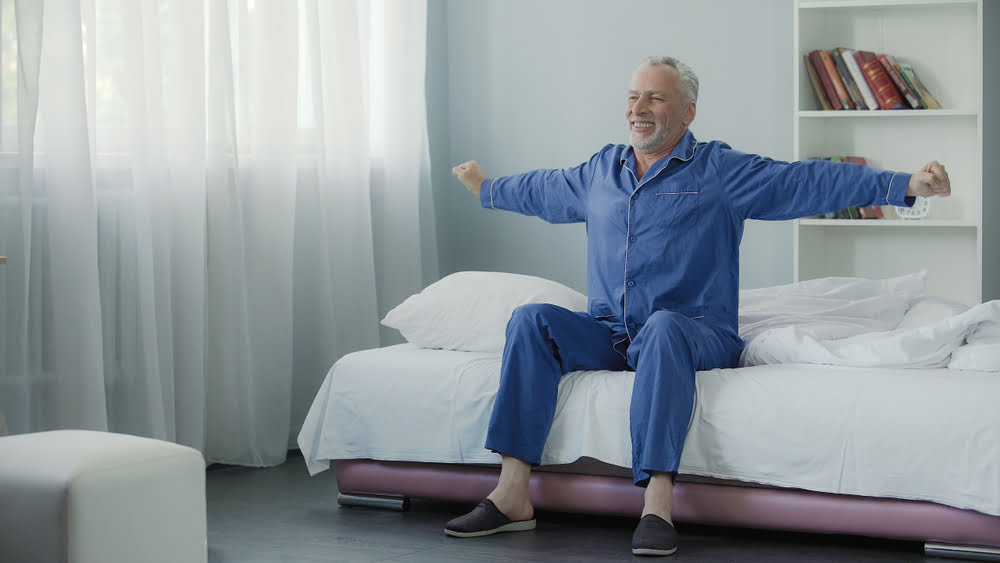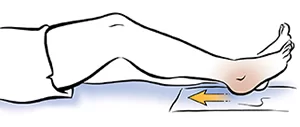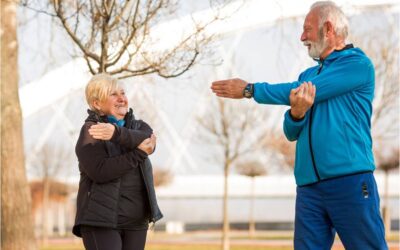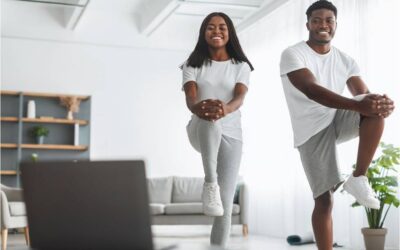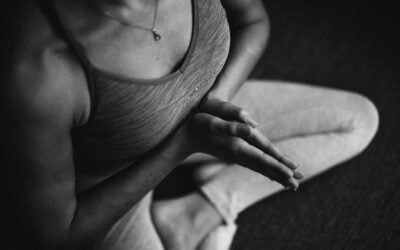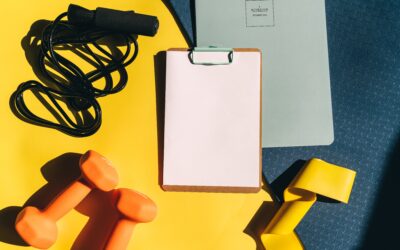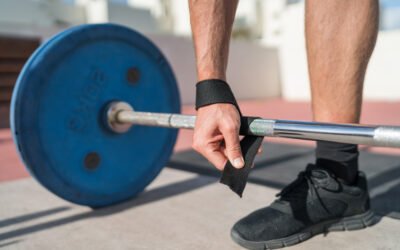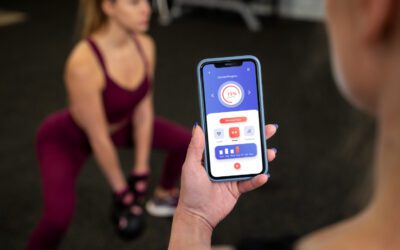Are you an elderly person looking for bed exercises that are safe and effective? Bed exercises for elderly people are an important part of staying healthy and active. Exercising while in bed can help to improve flexibility, strength, balance, and overall physical health. In this article, we will be discussing the 11 best bed exercises for the elderly. These exercises are designed to be easy and safe for elderly to do in the comfort of their own home.
The Most Common Physical Problems Faced by the Elderly.
As we age, our bodies naturally become more vulnerable to common physical problems. These issues can range from minor aches and pains to more serious medical conditions that require a doctor’s care. Some of the common problems are as udder;
1. Loss of muscle and physical strength.
One of the most common physical problems for elderly people is a loss of muscle and physical strength. As we age, our muscles naturally begin to weaken and lose their ability to function properly.
This can lead to difficulty in performing everyday activities such as walking, lifting objects, or getting out of bed. Furthermore, weak muscles can result in poor balance, increasing the risk of falls and injury.
2. Depression.
Depression is a common physical problem for elderly individuals and can be incredibly debilitating. Symptoms of depression may include persistent sadness or low mood, loss of interest in activities that were once enjoyable, changes in sleep patterns, fatigue, difficulty in concentrating, and thoughts of death or suicide.
If left untreated, depression can lead to other physical issues such as insomnia, digestive problems, and chronic pain. It is important to recognize the signs of depression in elderly individuals so that they can receive the help they need to manage their mental health.
Treatment for depression often includes talk therapy, medication and exercise which can have a huge impact on improving an elderly person’s overall quality of life.
3. Diabetes.
Diabetes is one of the most common physical problems faced by elderly people. It’s a chronic condition that affects the way the body metabolizes sugar. Diabetes can cause numerous health complications, including an increased risk of heart attack, stroke, and kidney failure.
People with diabetes are also at a greater risk of developing vision problems, such as glaucoma and cataracts. Symptoms of diabetes can include increased thirst, frequent urination, weight loss, fatigue, and slow healing of cuts and bruises.
4. Back pain and neck pain.
Back pain and neck pain are common physical problems found in elderly people. As we age, our muscles lose strength and flexibility, resulting in tension, aches, and stiffness. Poor posture and everyday activities can also cause or worsen back pain and neck pain. Common causes of this type of pain include muscle strain, arthritis, disc degeneration, and scoliosis.
5. Loss of Appetite.
Loss of appetite is another common physical problem for elderly people. It can be caused by a variety of medical conditions, such as depression, medication side effects, and digestive disorders. This can result in weight loss and malnutrition, which can lead to other health complications.
The main cause of loss of appetite in elderly individuals is due to changes in the body. The aging process can slow down the digestive system, which can make it harder for food to be properly absorbed and used for energy. Furthermore, medications and conditions such as diabetes or heart disease can contribute to appetite loss in elderly individuals.
Importance of Exercise in Elder Adults.
As we age, it is very important to stay active & maintain a healthy lifestyle. Exercise can help to reduce the risk of health issues such as heart disease, diabetes and depression. For elderly adults who may not be able to exercise in a traditional way, there are still ways to stay active while in bed.(1)
Bed exercises for the elderly can be an effective form of exercises to improve bed mobility, balance, flexibility, reduce pain, and improve overall strength.(2)
The 11 Best In Bed Exercises for the Elderly With Steps.
1. Arm Raises.
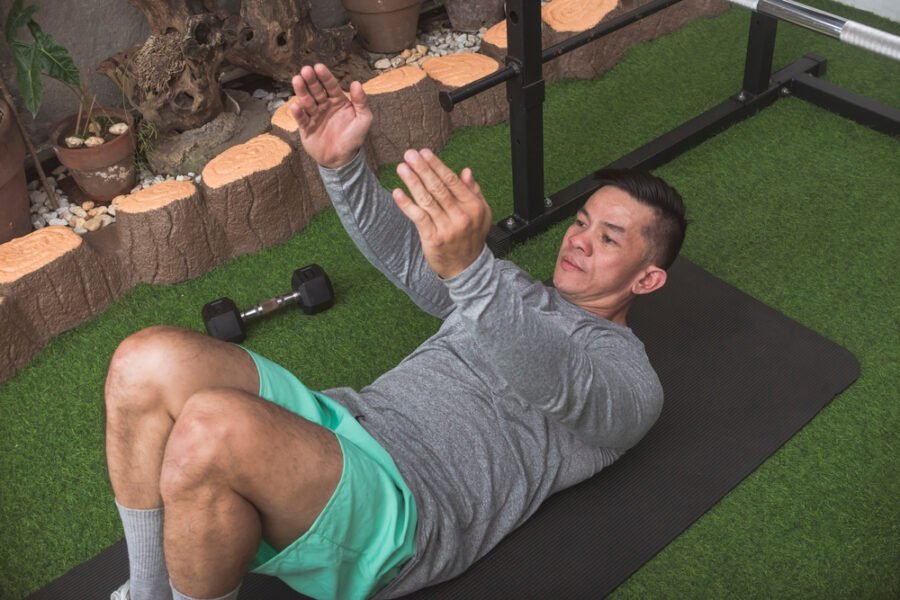
While lying on your back, lift your arms above your head and hold them there for three to four seconds before lowering them back down.
You may also clasp a pillow in both hands and squeeze for 10 seconds, completing this set 10 times.
2. Leg Lifts.
Leg lifts are one of the excellent leg exercises for elderly in bed, as they help to strengthen the lower body and improve balance.
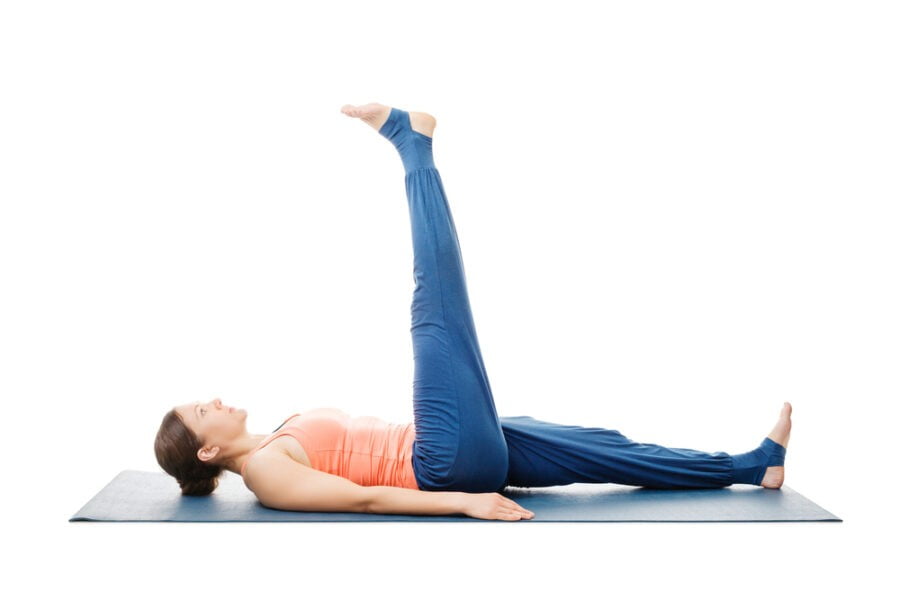
To perform this exercise, begin by lying on your back with your feet flat on the bed and your legs straight. However, it is also one of the effective bed exercises for stomach and belly fat.
Keeping your lower back pressed into the mattress; slowly lift one leg up until it is at a 90 degree angle to the bed.
Hold for a few seconds, and then slowly lower it back down. Repeat this movement 10-15 times with each leg for best results. If you feel any discomfort in your back during this exercise, stop immediately. However it is also one of the best leg strengthening exercises for elderly who have been bed ridden.
3. Hip Thrusts.
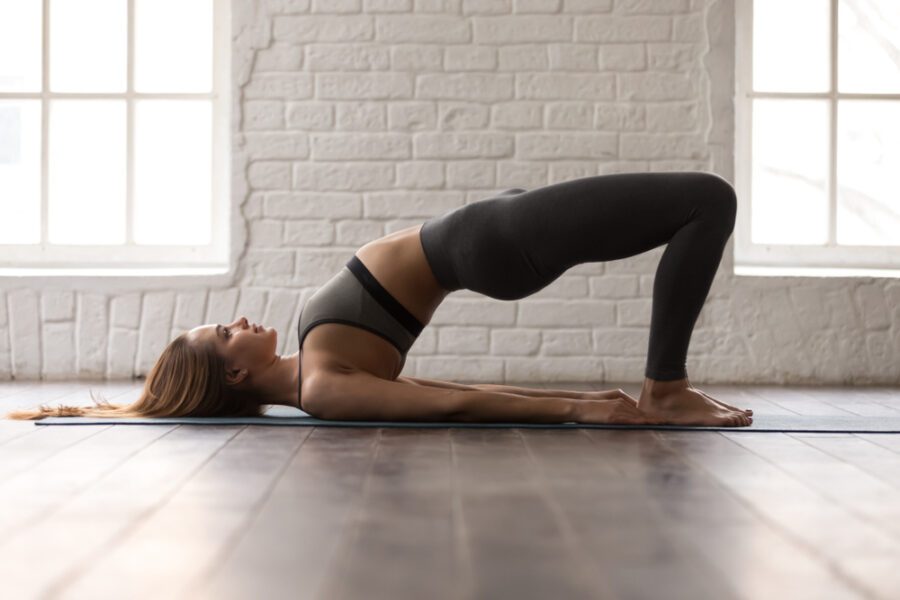
Lie down flat on your bed without any pillows beneath your head. Bend your legs, ensuring your feet are firmly on the mattress near your hips. Whilst engaging your abdominals and gluteus slowly lift your pelvis towards the ceiling, keeping the pose for 10 seconds before slowly lowering it. Perform this movement 10 times.
4. Shoulder Exercise.
At first sit with Cross-legged on the bed, allow your arms to hang limp to your sides.
At first, lift arms directly out to the sides until they reach shoulder height, then firmly contract the shoulder muscles at the apex.
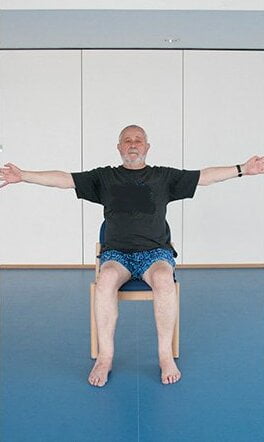
Slowly lower your arms back to the starting point. Repeat this same procedure but with arms extended in front of you, palms facing downwards. Do this set of shoulder exercises 10 times.
5. Knee Lifts.
Knee lifts are great bed exercises for elderly people, as they can be done from a lying position. To perform a knee lift, start by lying flat on your back with your knees bent and feet flat on the bed.
From this position, slowly lift one knee up until it is parallel with your hip, and then lower it back to its starting point.

Make sure to keep your core muscles engaged throughout the exercise. You can also hold onto your leg with both hands as you raise and lower it, or even add a slight twist to increase the intensity.
When finished, switch legs and repeat the exercise. Knee lifts can help strengthen the hip flexors and abs, while also improving balance and stability.
6. Heel Slides.
Heel slides help to strengthen and stretch the lower leg muscles. To perform heel slides, begin by lying on your back with both feet flat on the bed.
Slowly slide your heel away from your body while keeping your knee straight. Hold this position for a few seconds, and then slowly slide your heel back towards your body and repeat.
You can vary the intensity of this exercise by using a band around your foot to provide resistance as you slide your heel away from your body.
Heel slides can help improve strength, balance, and range of motion in the lower legs and should be performed a few times each day for maximum benefit.
7. Toe Taps.
Toe taps are a great bed exercise for elderly individuals looking to increase their mobility and balance. This exercise can be done while sitting or lying down in the bed.

To do a toe tap, simply raise one foot off the bed and tap your toes against the floor.
Then, lower your foot back onto the bed. Alternate feet and continue tapping for 10 repetitions.
For an added challenge, you can use a resistance band around the foot to add extra resistance. This exercise is great for improving coordination, balance, and range of motion.
8. Ankle Circles.
This exercise helps to maintain and improve ankle mobility. This exercise can be done while sitting in bed or lying down with your back flat against the mattress.
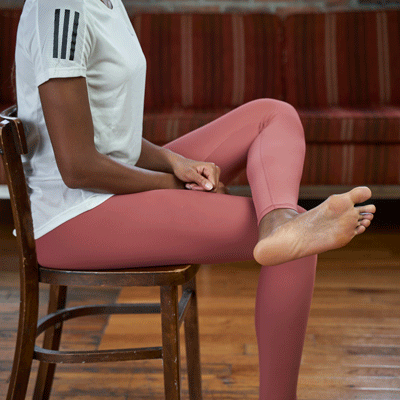
To begin, slowly draw small circles with your feet, aiming for about five circles in each direction. Make sure you’re using both feet and alternate directions for each circle.
Keep your toes pointed toward the ceiling as you move and focus on making the circles as smooth and even as possible.
If it helps, you can count out loud as you go or use a timer to make sure that you’re doing the same amount of circles for both feet.
Remember to keep your ankles loose and relaxed throughout the exercise to maximize its benefits.
9. Sit ups.

For the sit up, begin by lying down on the mattress with no pillows under your head. Pull your chin into your chest to prevent neck strain, and keep hands underneath your neck for support. Engage the abdominal muscles and gently raise your torso, not relying on your hands to help. Repeat this 10 times.
10. Push-ups.
For the push-ups, lay face-down on the bed, placing hands directly beneath the shoulders. Use upper body strength to rise into a plank pose, and then lower yourself back onto the mattress.

If this exercise is too strenuous, leave your knees on the bed as you push up and down. The push-up exercise should only be attempted if you are fully confident in your strength and flexibility.
11. Flexion Movements.

At first sit upright in bed with pillows supporting your back, and stretch your legs out in front. Carefully point your toes as far away from you as you can, and then bend your legs back towards yourself. Complete 25 repetitions of this flexion exercise.
These above mentioned In bed exercises are effective for everyday strength if practice properly with proper guidance.
Safety Measures During in Bed Exercises for the Elderly.
Everyone’s physical capacity is different and thus it is important to remain mindful of your body and limitations when exercising to ensure your safety. To this end, it is recommended to exercise with the presence of a companion, family member, personal trainer or friend to provide both moral support and physical safety.
It is essential to listen to your body; exercise should not cause any pain or discomfort. Therefore, it is recommended to start with lower intensity activities and slowly progress to more strenuous workouts when comfortable.
However, it is necessary to consult with a doctor before embarking on an exercise routine as individual needs and limitations may vary.
For further support, an elder adult may choose physical therapy services. It is best to check with your doctor for more details on these services which may include home or clinic visits.
The best diet for the elderly with In Bed Exercises.
Apart from the exercises eating the balanced diet for the elderly is very important for maintaining overall health and well-being. As we age, our bodies need different nutrients than when we were younger.
It’s important to ensure that our diets include plenty of fruits, vegetables, and whole grains to get the most out of our meals.
These foods provide essential vitamins, minerals, and other nutrients that can help keep us healthy and active. So here are the best diet you should follow with in Bed Exercises;
1. Fruits and vegetables.
Fruits and vegetables are essential for any healthy diet, but they are especially important for elders. The vitamins, minerals, and antioxidants that can be found in fruits and vegetables have been proven to help keep elders’ minds and bodies functioning optimally.

Eating a variety of fruits and vegetables every day is one of the best ways to ensure that elders are getting all the nutrients they need. Fruits like oranges and apples are high in vitamin C, which is important for helping the body absorb iron, while dark leafy greens are full of calcium, magnesium, and other vitamins and minerals.
Vegetables like broccoli and cauliflower provide fiber, which can help with digestion and reduce cholesterol. Eating a diet rich in fruits and vegetables is key for elders looking to maintain a healthy life.
2. Whole Grains.
Whole grains are an essential part of the diet for the elderly. They contain fiber, vitamins, minerals, and other important nutrients that are essential for elders. Whole grains provide elders with a slow release of energy, which helps to keep them feeling full longer.
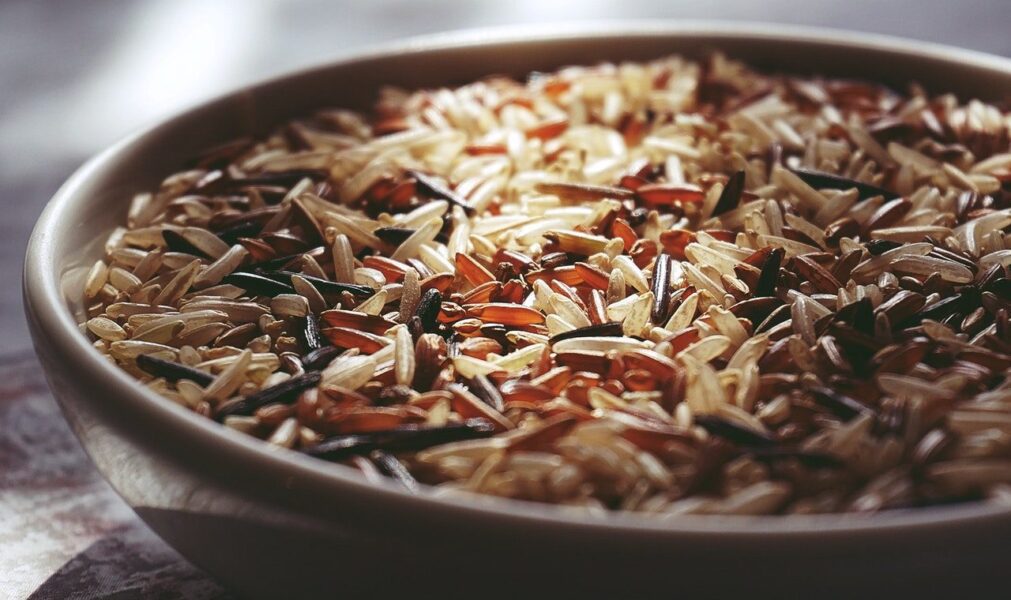
Whole grains are also known for their ability to reduce cholesterol levels, regulate blood sugar levels, and reduce the risk of heart disease and stroke. As an elder you should aim to get at least three servings of whole grains a day, such as oatmeal, brown rice, quinoa, and bulgur.
These whole grains can be added to soups, salads, and even smoothies. By incorporating whole grains into their diet, seniors can ensure that they’re getting the essential nutrients they need for a healthy lifestyle.
3. Avoid Processed Foods.
Processed foods often contain additives and preservatives that are not beneficial to the health of elders. Eating too much-processed food can lead to deficiencies in essential vitamins and minerals that are necessary for a healthy diet.

Elders should stick to whole foods like fresh fruits, vegetables, and whole grains. These foods provide all the necessary nutrients for an elderly person’s diet without any added chemicals or unhealthy fats.
Additionally, processed foods often contain high levels of sodium and sugar, which should be avoided when possible. By avoiding processed foods, elders can ensure that they are eating a balanced, healthy diet that will support their physical and mental well-being.
4. Protein.
Protein is a very important part of a healthy diet for the elderly. It can help promote muscle strength and help with weight management. It’s important to get a variety of proteins in your diet, such as lean meats, fish, beans, eggs, nuts, and seeds.

Adding in high-quality protein sources like Greek yogurt, cottage cheese, or tofu can also provide essential nutrients to the elderly. Eating enough protein is essential for the elderly to ensure they have enough energy and to maintain muscle strength.
5. Omega-3 Fatty Acids.
When it comes to the best diet for the elderly, fatty fish should be included. Fatty fish such as salmon, mackerel, herring, and sardines are a great source of omega-3 fatty acids, which have been linked to numerous health benefits.

Omega-3 fatty acids can help protect against heart disease, reduce inflammation, and improve cognitive function. They also support healthy joint and eye health, which is important for seniors.
In addition, omega-3 fatty acids are beneficial for overall mental health by helping reduce anxiety and depression. For optimal health, elders should aim to consume fatty fish at least twice per week as part of their healthy eating plan.
6. Limit Intake of Saturated and Trans Fats.
Saturated and trans fats are not beneficial for elders, as they can lead to an increased risk of heart disease. Diet for the elderly should include only small amounts of saturated and trans fats. These fats are found in some processed foods, fried foods, and high-fat dairy products.
7. Sugar Should be Limited.
When it comes to the diet for the elderly, sugar should be limited as much as possible. Consuming too much sugar can lead to a variety of health issues, including an increased risk for diabetes and other chronic diseases.
Eating large amounts of sugar can also contribute to weight gain, which can lead to several health problems. Elders need to choose foods that are low in added sugars, such as fruits and vegetables, lean proteins, and whole grains.
Additionally, they should limit their intake of sugary snacks and sweets, such as candy and soda.
8. Alcohol Should be Consumed in Moderation.
Moderation is key when it comes to alcohol. While occasional social drinking can be beneficial to some elders, too much alcohol can lead to health issues such as high blood pressure, stroke, and memory loss.
Additionally, alcohol can interact with certain medications and cause serious side effects. Elders need to consult with their doctor before consuming any type of alcoholic beverage.
To ensure they are staying healthy, elders should stick to moderate alcohol consumption. The Dietary Guidelines for Americans recommend no more than 1 drink per day for women, and 2 drinks per day for men.
It is also important to note that it is not safe for individuals over 65 to drive after consuming any amount of alcohol, so alternative transportation should be arranged.
By following these guidelines, seniors can ensure they are making the best decisions regarding their health and well-being. As always, it is important to consult with a healthcare professional when making any dietary changes.
*Note. Eating smaller meals throughout the day rather than large ones in one sitting can also be beneficial, as well as making sure to take time out to relax before meals. Additionally, making sure the elderly person is drinking enough fluids throughout the day can help with digestion and maintaining their appetite.
Bottom Line.
Bed exercises for the elderly are a great way to keep fit and active in their golden years. They can be done from the comfort of your bed, without the need for any special equipment or trips to the gym. The exercises outlined in this article are all safe, effective and easy to do. They can be done daily, or as often as you’d like, and they help to keep muscles strong, improve flexibility, and increase circulation. Taking just a few minutes each day to do these exercises can make a big difference in your overall health and wellbeing. However you should also maintain a healthy diet with these exercises for an effective result.
+2 Sources
Freaktofit has strict sourcing guidelines and relies on peer-reviewed studies, educational research institutes, and medical organizations. We avoid using tertiary references. You can learn more about how we ensure our content is accurate and up-to-date by reading our editorial policy.
- The Importance of Physical Activity Exercise among Older People; https://www.ncbi.nlm.nih.gov/pmc/articles/PMC6304477/
- Functional sit-to-stands evoke greater neuromuscular activation than orthopaedic bed exercises in healthy older adults; https://www.researchgate.net/publication/324583085_Functional_sit-to-stands_evoke_greater_neuromuscular_activation_than_orthopaedic_bed_exercises_in_healthy_older_adults

 Workout
Workout
 Meditation
Meditation


 Stories
Stories


 Podcast
Podcast E-book
E-book